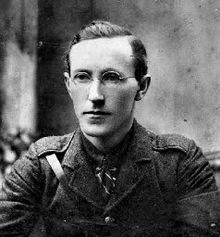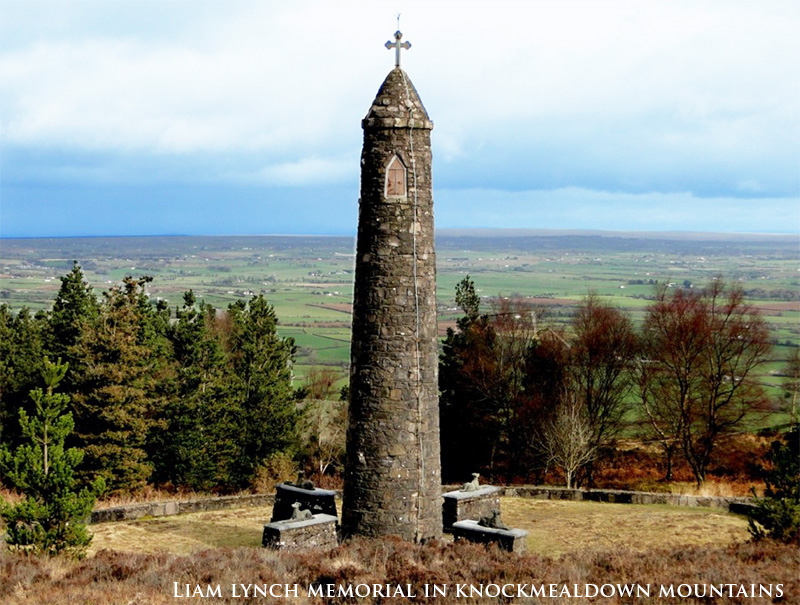
Liam Lynch, Born 9 November 1893 Barnagurraha, County Limerick. Died 10 April 1923 (aged 29) Clonmel Hospital, Clonmel, County Tipperary.
General Liam Lynch, was one of the key figures in the War of Independence and the Civil War.
This Audio clip below (22 minutes) is from the RTE Radio series Uncivil War, presented by Colm Keane, when many happenings and aspects of the Civil War are commented on by contributors. Interviews of Mr Con Donovan, of Ballyporeen who was Chairman of the Liam Lynch Memorial Committee from 1960 to 1990, in all 30 years and when he joined the committee he met many of the men who had fought in the War for Independence and also of the Civil War, including Matt Flood, Lar Condon, John Fanning, Paddy O’Brien, Liscarroll, Paddy Aherne and others.
Born at Barnagurraha near Mitchelstown, he is credited with playing a pivotal role in helping to organise the Irish Volunteers in Cork, serving as Commandant of the Cork No2 Brigade of the Irish Republican Army during the War of Independence.
Lynch was vehemently opposed to the signing of the Anglo-Irish Treaty, famously saying “we have declared for an Irish Republic, and will not live under any other law.”
After initially opposing the seizure of the Four Courts in 1922, Lynch joined the garrison and was arrested by Free State forces and later released on the understanding that he would try to halt the fighting. Instead he set about reorganising resistance, even planning the establishment of a ‘Munster Republic’, which he believed would hamper the development of the Free State. Lynch was fatally wounded during a skirmish with Free State forces in the Knockmealdown Mountains on April 10, 1923 and laid to rest in Kilcrumper two days later. Buried in the Republican Plot in Kicrumper Old Cemetery, he rests along side fallen comrades: Michael Fitzgerald (Fermoy) Daniel Shinnick (Castletownroche), Michael Rouse (Ballindangan) and Denis O’Brien (Kilworth).
His death shocked the nation and was widely regarded as one of the key motivations behind the decision by army Chief of Staff, Fran Aiken to declare a ceasefire on April 30, 1923.
Rest in Peace.

The Liam Lynch memorial.
On 7 April 1935, a 60-foot-high (18 m) round tower monument was erected on the spot where Lynch is thought to have fallen. This memorial lies on the wooded slopes of Crohan Mountain.



